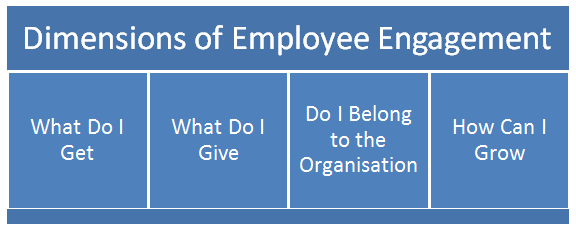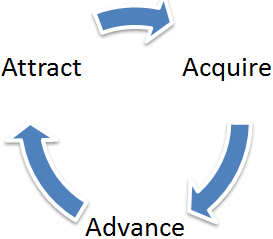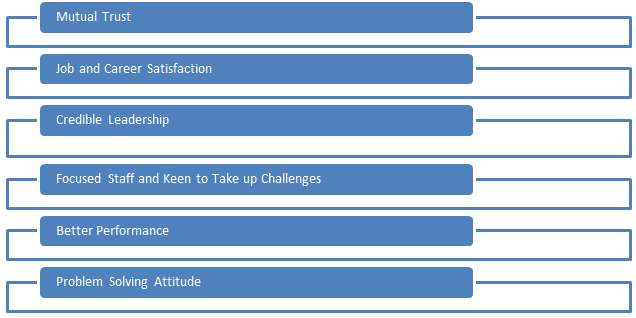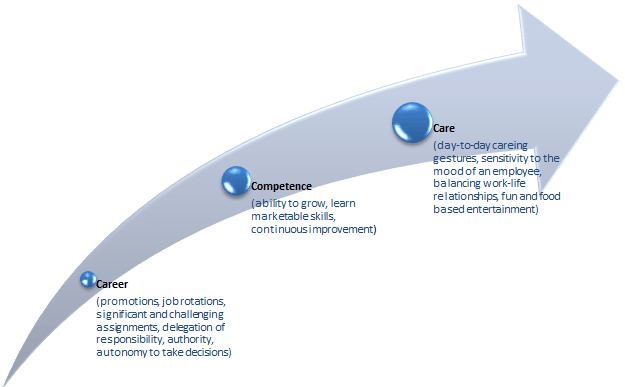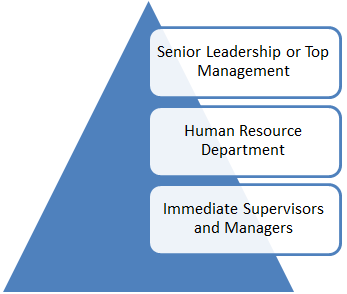1606
Employee Engagement / Elements of Employee Engagement
« on: April 25, 2012, 04:56:24 PM »
The term employee engagement has been defined by various researchers. A commonly agreed upon definition would be physical, psychological or emotional involvement of the employee while at work.
Four things are important when we talk about employee engagement; commitment, motivation, loyalty and trust. Their level determines the quality of engagement of an employee. Each one is briefly discussed in the coming paragraphs.
Commitment: Commitment means the degree to which individuals associate themselves with the job, the responsibilities and the organisational objectives. Engaged employees are those who are fascinated by their work and committed to face every challenge to attain their goals. They are dependable and highly productive and therefore, are accountable for what they do.
Motivation: Up till recently it was believed that the biggest motivation is achievement. The reverse is also true, which means achievement results in more motivation. If employees put in their 100 percent efforts to take their organisation to the next level, this attained status motivates them more than anything. Proper rewards and recognitions can further motivate them to achieve more and more for their organisation. Motivation and achievement go hand in hand and act as the burning fuels for the success of any organisation.
Loyalty: Employees who are actively engaged in their work show more loyalty towards the organisation. The best part is that they need less focus and attention of managers to perform their task as they themselves feel accountable for their job responsibilities and results attained. However, it doesn’t take much time for actively engaged employees to turn into disengaged employees if the organisation doesn’t have a well established reward system. Recognition is a basic necessity of individuals to remain steered up towards their job.
Trust: High levels of employee engagement can be fostered only when trust prevails in the organisation from both the sides. As they share strong emotional bond with the organisation, the latter should also show trust in their abilities. Employees must be given autonomy to perform their tasks their way. They should not be restricted to a specific rules and regulations and therefore, should be motivated to experiment to perform their task in a different and innovative manner.
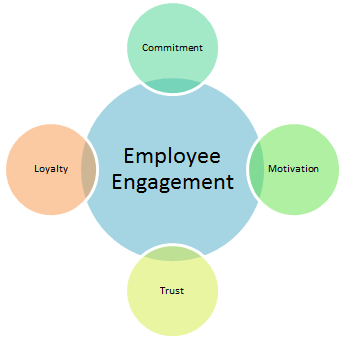
Employee Engagement Elements
All these elements play a vital role in determining the fate of an organisation. Besides this, two-way communication to discuss challenges, potential consequences, vision and values and organisation’s future should be established. In fact, communication is the backbone of any organisation without which it can’t survive for long. Having an open conversation with employees can solve the problems that they are facing in executing their job.
Apart from this, organisational culture, a well established and duly followed reward system including compensation, benefits, stock exchange options and recognition and personal growth and satisfaction of employees are also important factors in improving the levels of employee engagement.
Four things are important when we talk about employee engagement; commitment, motivation, loyalty and trust. Their level determines the quality of engagement of an employee. Each one is briefly discussed in the coming paragraphs.
Commitment: Commitment means the degree to which individuals associate themselves with the job, the responsibilities and the organisational objectives. Engaged employees are those who are fascinated by their work and committed to face every challenge to attain their goals. They are dependable and highly productive and therefore, are accountable for what they do.
Motivation: Up till recently it was believed that the biggest motivation is achievement. The reverse is also true, which means achievement results in more motivation. If employees put in their 100 percent efforts to take their organisation to the next level, this attained status motivates them more than anything. Proper rewards and recognitions can further motivate them to achieve more and more for their organisation. Motivation and achievement go hand in hand and act as the burning fuels for the success of any organisation.
Loyalty: Employees who are actively engaged in their work show more loyalty towards the organisation. The best part is that they need less focus and attention of managers to perform their task as they themselves feel accountable for their job responsibilities and results attained. However, it doesn’t take much time for actively engaged employees to turn into disengaged employees if the organisation doesn’t have a well established reward system. Recognition is a basic necessity of individuals to remain steered up towards their job.
Trust: High levels of employee engagement can be fostered only when trust prevails in the organisation from both the sides. As they share strong emotional bond with the organisation, the latter should also show trust in their abilities. Employees must be given autonomy to perform their tasks their way. They should not be restricted to a specific rules and regulations and therefore, should be motivated to experiment to perform their task in a different and innovative manner.

Employee Engagement Elements
All these elements play a vital role in determining the fate of an organisation. Besides this, two-way communication to discuss challenges, potential consequences, vision and values and organisation’s future should be established. In fact, communication is the backbone of any organisation without which it can’t survive for long. Having an open conversation with employees can solve the problems that they are facing in executing their job.
Apart from this, organisational culture, a well established and duly followed reward system including compensation, benefits, stock exchange options and recognition and personal growth and satisfaction of employees are also important factors in improving the levels of employee engagement.


